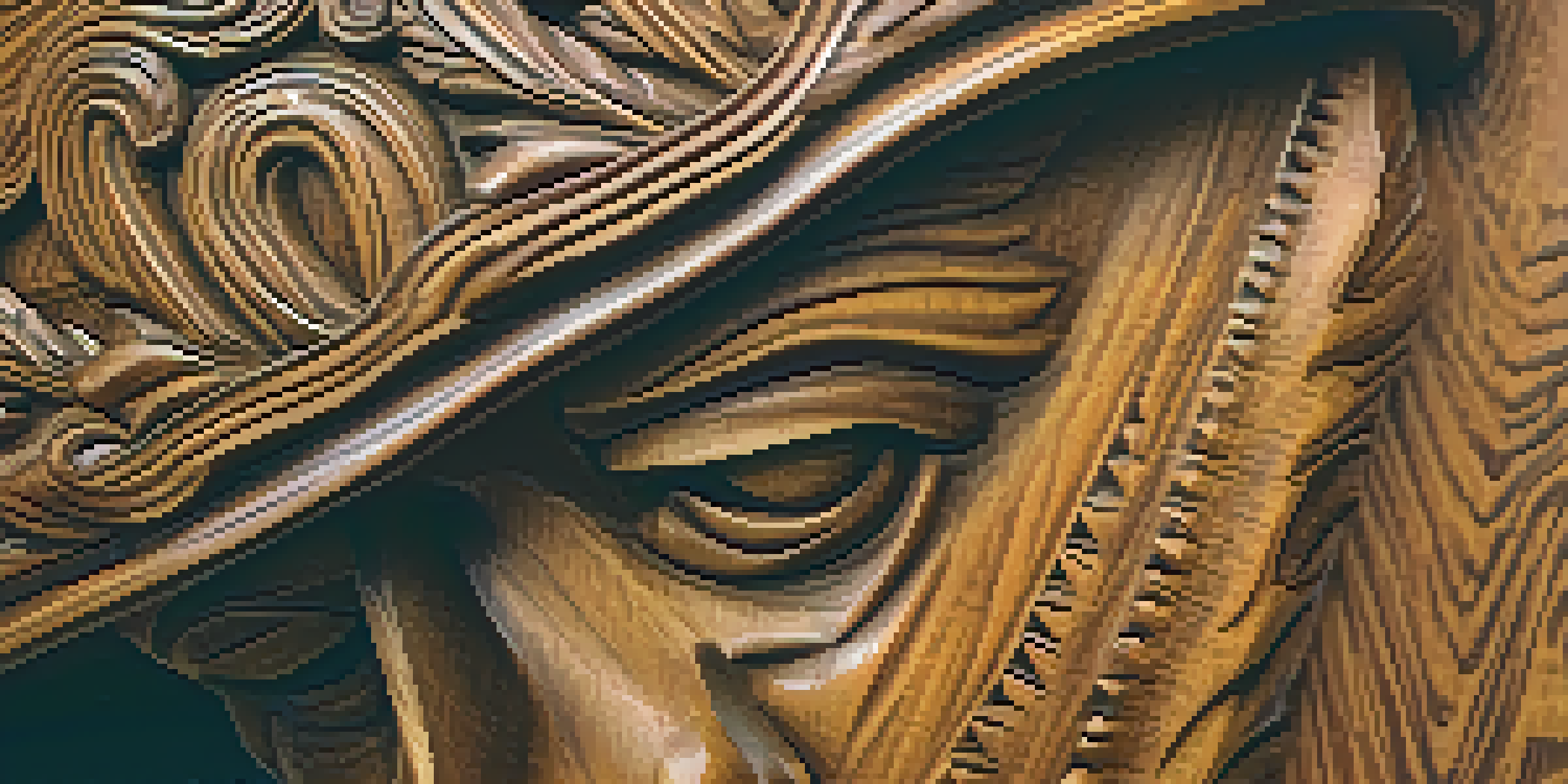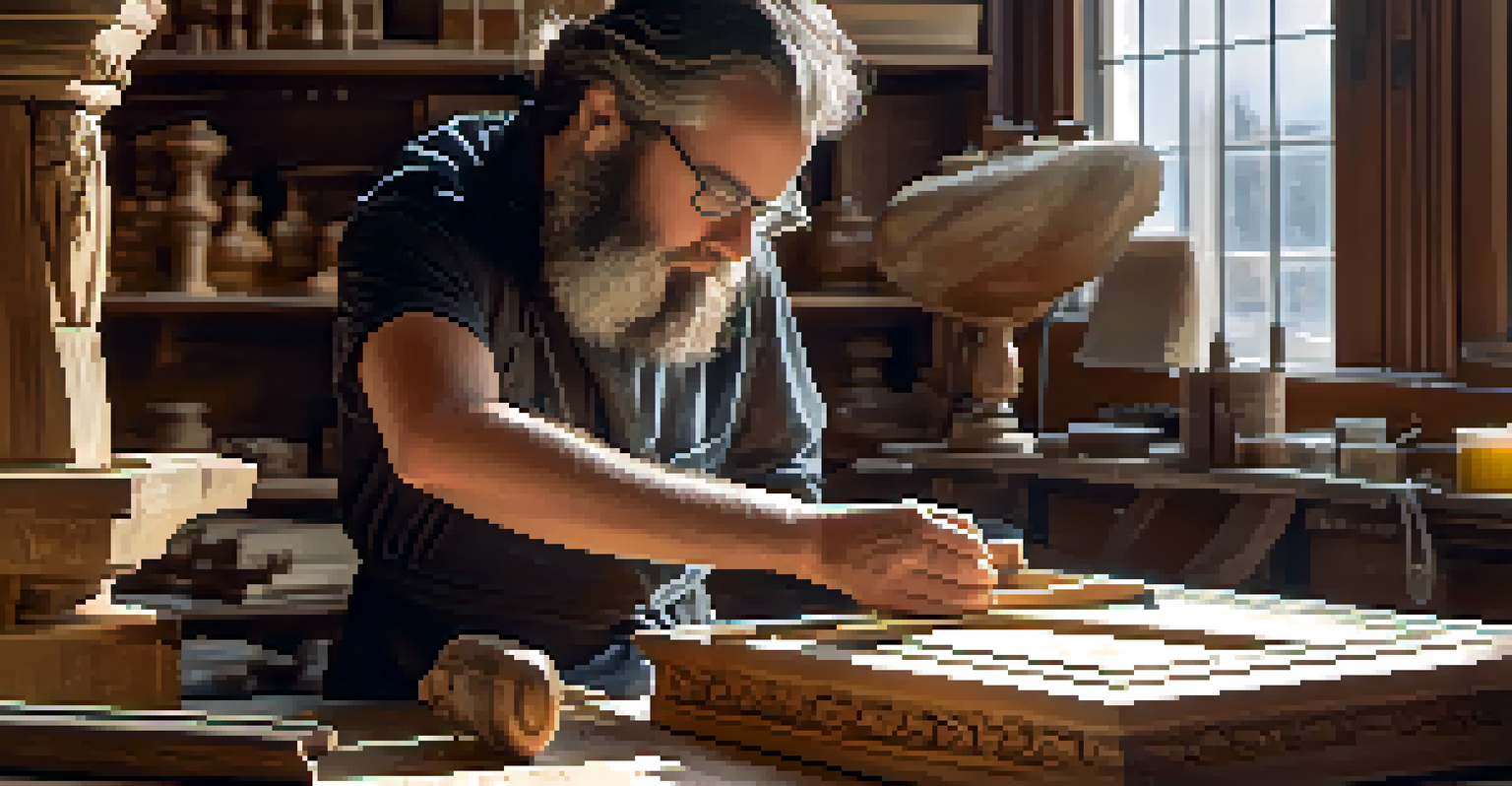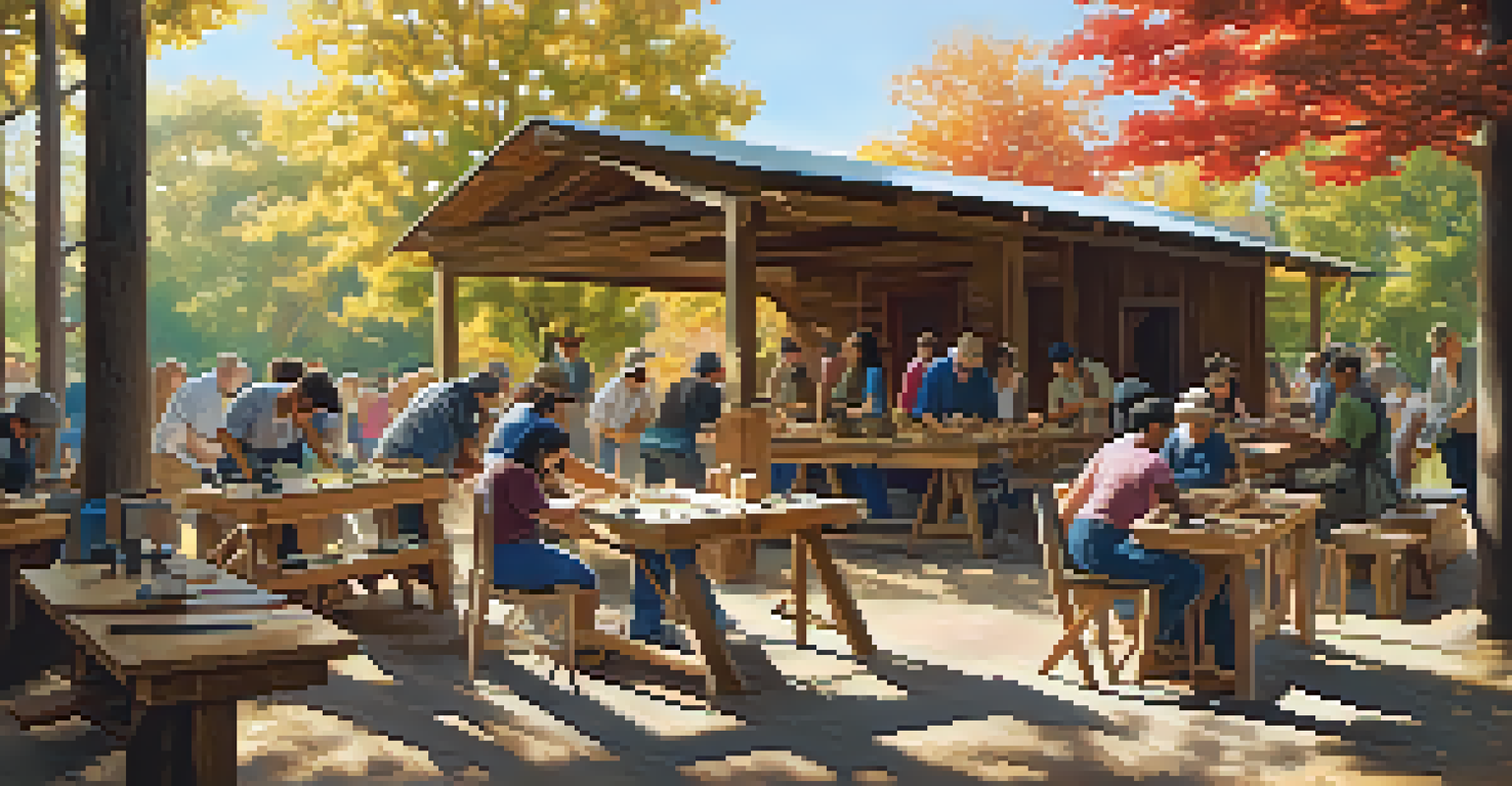Innovative Techniques for the Restoration of Wooden Carvings

Understanding the Importance of Wooden Carvings
Wooden carvings are not just decorative items; they are pieces of history that tell stories. Each carving holds cultural significance and reflects the craftsmanship of its time. Understanding their importance is crucial when considering restoration techniques, as it helps maintain their integrity.
Art is not what you see, but what you make others see.
Preserving these artworks goes beyond aesthetics; it’s about safeguarding the heritage they represent. When we restore a wooden carving, we're not merely fixing it; we're ensuring future generations can appreciate its beauty and meaning. This perspective drives the innovative techniques used today.
Moreover, as environmental concerns grow, restoring wooden carvings can be a sustainable practice. By revitalizing existing pieces rather than creating new ones, we reduce the demand for new materials and contribute to the preservation of our forests.
Assessing the Condition of Wooden Carvings
Before diving into restoration, it's essential to assess the condition of the wooden carvings. This involves checking for damage such as cracks, discoloration, and pest infestations. A thorough evaluation helps determine the most appropriate restoration techniques to use.

Professional conservators often utilize non-invasive methods, like infrared reflectography, to uncover underlying issues without causing further damage. This technology reveals hidden layers of paint and wood, giving a clearer picture of the carving's history and condition.
Wooden Carvings as Cultural Heritage
Wooden carvings are vital pieces of history that require careful restoration to preserve their cultural significance for future generations.
By understanding the nuances of each piece, restorers can develop a tailored approach that respects the original artistry while addressing any deterioration. This careful assessment lays the foundation for a successful restoration process.
Innovative Cleaning Techniques for Wooden Carvings
Cleaning wooden carvings is an art in itself, requiring delicate techniques to avoid damage. Traditional methods often involved harsh chemicals, which could strip away the original finish. Today, however, conservators are turning to gentler, more innovative cleaning solutions.
Preservation is the key to the future of our heritage.
For instance, the use of micro-abrasive techniques allows for effective cleaning without harming the wood. This method employs tiny particles to gently lift dirt and grime, leaving the carving intact. Additionally, steam cleaning is becoming popular as it removes debris without harsh chemicals, making it safer for the wood.
These advanced cleaning methods not only restore the appearance of wooden carvings but also prepare them for further restoration work. A clean surface ensures that any subsequent treatments, like re-finishing or re-coloring, adhere properly and provide lasting results.
Repairing Damages with Modern Materials
When it comes to repairing damages, modern materials have revolutionized the restoration process. Traditional methods often relied on wood fills or patching, which could be easily noticeable. Now, restorers are using innovative materials that blend seamlessly with the original wood.
For instance, epoxy resins are commonly used to fill cracks and gaps. They can be tinted to match the wood's color, ensuring a smooth finish that’s hard to detect. This not only enhances the aesthetic appeal but also strengthens the structural integrity of the carving.
Innovative Techniques Enhance Restoration
Modern materials and technologies have transformed the restoration process, allowing for effective repairs while maintaining the original artistry.
These modern materials are also more durable, offering better resistance to environmental factors like humidity and temperature changes. By utilizing these innovative solutions, restorers can ensure the longevity of wooden carvings while maintaining their original charm.
Preserving Original Finishes and Patinas
One of the most significant aspects of restoring wooden carvings is preserving their original finishes and patinas. These elements contribute to the character and historical value of the piece, making it vital to approach restoration with care. Fortunately, innovative techniques now allow for the preservation of these features.
For example, conservators often use reversible treatments, meaning that if future restoration is needed, it can be undone without harming the original finish. This approach respects the history of the carving while ensuring it remains protected from further deterioration.
Additionally, advanced waxes and oils can be applied that enhance the natural beauty of the wood without disrupting the existing patina. This careful balance between restoration and preservation is crucial for maintaining the integrity of wooden carvings.
Utilizing Technology in Restoration Processes
Technology plays a pivotal role in the restoration of wooden carvings, offering tools that enhance accuracy and effectiveness. Digital imaging, for instance, allows restorers to create detailed records of each piece, tracking its condition over time. This data-driven approach ensures that any restoration work is informed and precise.
3D scanning technology is also making waves in the restoration field. By creating accurate digital models of carvings, conservators can identify areas needing repair and even replicate missing parts with great precision. This technology not only aids in restoration efforts but also preserves a digital record for future reference.
Community Involvement is Essential
Engaging the community in preservation efforts fosters a deeper connection to cultural heritage and encourages innovative restoration techniques.
Moreover, augmented reality applications can assist restorers in visualizing potential changes before they are made. This innovative use of technology enhances decision-making and helps maintain the authenticity of the restoration process.
The Role of Community in Preservation Efforts
Community involvement plays a crucial role in the preservation of wooden carvings. Local groups often organize workshops and educational programs to raise awareness about the importance of these artworks. By fostering a connection between the community and its cultural heritage, we ensure that these pieces are valued and cared for.
Volunteer restoration projects can also bring together skilled artisans and novices alike, creating a collaborative environment for learning and sharing techniques. This hands-on experience not only benefits the carvings but also cultivates a sense of pride and ownership within the community.

Furthermore, engaging the community in preservation efforts can lead to innovative ideas and techniques that might not have been considered otherwise. This collective approach to restoration enriches the process and strengthens the bond between people and their cultural heritage.